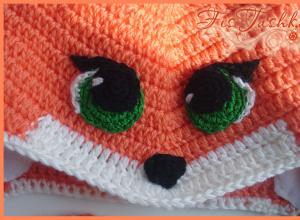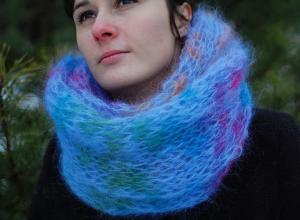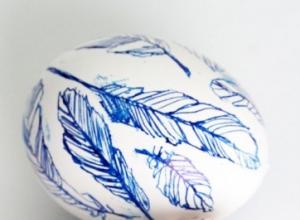Finger coloring for kids 1. Incredible finger coloring books
Finger coloring books for kids are always in demand among parents. Why are they so attractive, and what could be the benefit of such entertainment?

“The child’s mind is at his fingertips,” said the famous teacher V.A. Sukhomlinsky. It has long been known that tactile sensations (sensations from touch) directly affect the development of the nervous system and brain. Finger painting and palms - this is a great way to develop not only fine motor skills, as some parents think, but also thinking and speech. Speech therapists successfully use finger exercises in their work precisely because the development of fine motor skills of a child’s hand contributes to the development of speech in early preschool age. The center responsible for movement is located in the brain next to the speech center, and when the first one begins to work, it forces the second one to develop.
Thus, finger painting develops and speech , And thinking , And fine motor skills , as well as tactile sensitivity, coordination of movements, color perception and shape perception. It turns out that an activity that in itself brings joy and pleasure to the child has a huge developmental effect.
Some experts believe that you can start finger painting classes as early as six months. But there are no clear recommendations here - knowing your child, the characteristics of his temperament and development, you yourself can determine the moment when you can introduce him to paints.

How to choose finger coloring books?
When you choose finger coloring for your baby, pay attention to several points that must be fulfilled:
- The paper should be thick (if you apply more paint with your finger than with a brush, the thin paper will begin to bend and get wet).
- Also, due to a thicker layer of paint, the finished painting will take longer to dry, so it is better if the design of the coloring book allows you to remove sheets from it or effortlessly lay it out in a horizontal position so that the coloring book does not slam shut.
- The drawing for kids should be simple and large, the images recognizable and positive, the picture should not be overloaded with details.
- The outline of the figure to be painted should be quite bold.
When creating finger coloring books, Robins Publishing House took all these requirements into account. We try to make working with our educational materials a joy for both you and your baby!
So, you have decided that your baby is ready to draw. Where to begin?

Place your baby on your lap, place a large piece of paper in front of you, and place some jars of paint and water. You need to choose a large sheet (A3 or larger) so that the child, sitting on your lap, does not reach its edges. Small children do not focus on the edge of the sheet and will happily “paint” the table, themselves, and everything around them too. It is better to choose “primary”, pure colors: red, yellow, blue, green. Dip your finger into a can of paint, leave an imprint on a piece of paper, or draw a line with your finger. Be sure to comment on your actions to your child and name the chosen color.
For some children, for the first time it is quite enough to simply watch their parent draw. If the child has expressed a desire to draw too, take his hand in yours and dip the child’s finger in the paint, and after that, together make several prints on paper. Guide the child's hand, show him the movement that can be used to leave paint on a sheet of paper. As soon as the child gets the hang of it, he will pick up paint and draw himself.
Be sure to express your approval of your child's actions. The first lessons may not exceed a few minutes in duration, until the child gets tired and is distracted by something else.
As a rule, parents want to immediately draw something beautiful or at least something that can be identified (for example, a sun or a flower).
Finger painting is the easiest and most accessible way of drawing for kids. Children aged 1 - 2 years are not yet able to firmly hold a pencil or brush. But dipping a finger in paint and making spots on a sheet of paper is exactly what they can do.
Drawing classes will help develop fine motor skills, attention, memory, concentration, perseverance, the child learns color perception, and also realizes his artistic abilities.
Children should practice drawing together with their parents; this is necessary to establish emotional contact between mother and child.
Here we would like to introduce you finger painting templates , only 8 pieces with pictures of fruits and berries: apple, currant, grapes, pineapple, plum, strawberry, lemon, cherry.
You can download them for free. All you have to do is print out the templates and offer them to your child for drawing. You can choose any finger paints, and even make them yourself. This is described in a separate publication.
The most important thing in working with a child is a positive attitude; you should not press him if he does not want to draw now, but wants, for example, to sculpt from plasticine. By the way, these templates can also be successfully used for modeling; ask your child to make them out of plasticine and glue “patches” to the pictures. He will probably like this game. You also need to print out the pictures, roll small balls out of plasticine of different colors with your child and show the baby how to cover the patches on the pictures with them.
This activity is also great for developing fine motor skills and is sure to please your child. He will be very happy to sculpt balls onto white circles with his fingers.
Finger painting templates - currants and strawberries

Finger painting templates - pineapple, apple

Finger painting templates - lemon, cherry

Finger painting templates - grapes, plums
We tried these templates and here's how - first we rolled balls out of plasticine and sculpted patches.







And when we got tired of making balls, we started painting with our fingers.

Finger painting - pictures for finger painting for kids

Finger coloring books for kids to print
Incredible finger coloring
Finger coloring books for kids are always in demand among parents. Why are they so attractive, and what could be the benefit of such entertainment?

“The child’s mind is at his fingertips,” said the famous teacher V.A. Sukhomlinsky. It has long been known that tactile sensations (sensations from touch) directly affect the development of the nervous system and brain. Finger painting and palms - this is a great way to develop not only fine motor skills, as some parents think, but also thinking and speech. Speech therapists successfully use finger exercises in their work precisely because the development of fine motor skills of a child’s hand contributes to the development of speech in early preschool age. The center responsible for movement is located in the brain next to the speech center, and when the first one begins to work, it forces the second one to develop.
Thus, finger painting develops and speech , And thinking , And fine motor skills , as well as tactile sensitivity, coordination of movements, color perception and shape perception. It turns out that an activity that in itself brings joy and pleasure to the child has a huge developmental effect.
Some experts believe that you can start finger painting classes as early as six months. But there are no clear recommendations here - knowing your child, the characteristics of his temperament and development, you yourself can determine the moment when you can introduce him to paints.

How to choose finger coloring books?
When you choose finger coloring for your baby, pay attention to several points that must be fulfilled:
- The paper should be thick (if you apply more paint with your finger than with a brush, the thin paper will begin to bend and get wet).
- Also, due to a thicker layer of paint, the finished painting will take longer to dry, so it is better if the design of the coloring book allows you to remove sheets from it or effortlessly lay it out in a horizontal position so that the coloring book does not slam shut.
- The drawing for kids should be simple and large, the images recognizable and positive, the picture should not be overloaded with details.
- The outline of the figure to be painted should be quite bold.
When creating finger coloring books, Robins Publishing House took all these requirements into account. We try to make working with our educational materials a joy for both you and your baby!
So, you have decided that your baby is ready to draw. Where to begin?

Place your baby on your lap, place a large piece of paper in front of you, and place some jars of paint and water. You need to choose a large sheet (A3 or larger) so that the child, sitting on your lap, does not reach its edges. Small children do not focus on the edge of the sheet and will happily “paint” the table, themselves, and everything around them too. It is better to choose “primary”, pure colors: red, yellow, blue, green. Dip your finger into a can of paint, leave an imprint on a piece of paper, or draw a line with your finger. Be sure to comment on your actions to your child and name the chosen color.
For some children, for the first time it is quite enough to simply watch their parent draw. If the child has expressed a desire to draw too, take his hand in yours and dip the child’s finger in the paint, and after that, together make several prints on paper. Guide the child's hand, show him the movement that can be used to leave paint on a sheet of paper. As soon as the child gets the hang of it, he will pick up paint and draw himself.
Be sure to express your approval of your child's actions. The first lessons may not exceed a few minutes in duration, until the child gets tired and is distracted by something else.
As a rule, parents want to immediately draw something beautiful or at least something that can be identified (for example, a sun or a flower).
Like
Comments- Finger coloring and drawing.
Finger paints are a convenient and interesting way of drawing for kids. One of the interesting types of creative activities is coloring with finger paints. The child can create a beautiful picture only with the help of his fingers and paints! I'll tell you about...
- Finger paint
About finger paints. Recipes for making finger paints at home. It is known that tactile sensations (that is, touch, sensations from touch) directly affect the development of the human nervous system, in particular the brain. Drawing is a huge...
- Finger paint!
You can arrange a colorful adventure for your little one, and at the same time great pleasure, with the help of drawing. The best option for the first acquaintance is finger paints for hand painting. Moreover, you can even make them yourself. Young children often...
- Finger games
We all really want our children to start talking early. We await the first words with trepidation. But we often forget that for this we need to lay a good foundation, because the child’s speech development is directly related to the development of the small...
Today we offer you a huge selection of pictures and templates for finger painting with children. 100 colorful templates that both you and your child will love!
What a wonderful invention this is - finger paints! You don’t have to be afraid to taste real finger paints, because they are made from natural and safe materials. These finger paints are easy to make yourself. Therefore, they can be used to draw from the moment the child learns to sit.
Finger painting is very useful for a child's development in the early stages of life. The most important advantage of finger paints is the ability to develop fine motor skills of the hand, and at the same time the child’s speech. Learning to paint with your fingers and palm is the first step towards painting with brushes. By touching such paints, the baby also develops the sensitivity of the palm and small fingers, and this in turn helps them begin to obey their owner faster. Such activities help develop not only motor skills, but also perseverance, attention, concentration, teach how to handle paints and paper, learn colors, and increase intelligence at an early stage of development. In addition, finger painting promotes the development of a child’s imagination and creative thinking.
Below you will find all 100 finger painting templates. Download, print and create with your kids!











We started drawing at about 1 year old. At first Antoshka did it with finger paints in the bathroom. A couple of months later, my husband made an easel, and my son became acquainted with brushes and gouache.
Basically, the child draws whatever he wants with the materials he wants or that I provide. Free drawing should be practiced as often as possible. But don't stop there.
In this article I will share drawing ideas with children aged 1 - 3 years old, I will talk about various techniques for drawing with paints, pencils and other materials, even shaving foam.
You can also download coloring pages for little ones and finger painting templates.
I won’t talk at length about the benefits of drawing with children. I think you already know very well that it develops the child’s imagination, creativity, improves hand coordination and fine motor skills of the fingers.
How to draw with a child 1-3 years old
 In the article about applications I talked about the book E.A. Yanushko. This author also has a book "Drawing with young children"(Labyrinth, Ozone). This is an excellent teaching tool for parents and teachers, and it also comes with a CD with demonstration materials.
In the article about applications I talked about the book E.A. Yanushko. This author also has a book "Drawing with young children"(Labyrinth, Ozone). This is an excellent teaching tool for parents and teachers, and it also comes with a CD with demonstration materials.
The book presents methodology for conducting drawing classes with children 1 – 3 years old. I take many ideas from her.
Before you start drawing with your child, here are some simple tips from me:
- Show your child various drawing techniques (pokes, strokes, stamping, etc.) gradually, starting with the simplest ones.
- I highly recommend buying or making your own easel for painting. It is relevant as soon as the child learns to walk.
- Draw as often as possible.
- Use a variety of drawing materials.
- Try to immediately teach your child to hold a brush and pencil correctly. But if the child stubbornly refuses to do this, do not insist.
- Give your child maximum freedom. Let the child draw what he wants and how he wants. Never demand that he draw the way you want. Below I will talk about various drawing techniques with children, but if the child refuses to do something, do not insist.
Don't correct your child! Let him draw purple skies and red grass. So what if cows don't fly and there are no fences on the rainbow? Your child's mind is still free from cliches. He is a true creator.
The more different art materials you use, the better.
You need to start with the easiest to learn (for example, finger paints), eventually reaching ordinary pencils.
We draw on:
- plain paper
- old wallpaper,
- easel,
- magnetic board,
- plaster figures for coloring,
- wood, plywood,
- fabrics,
- tiles in the bathroom and in the bath itself.
For drawing with children 1 - 3 years old, you can use the following materials:
- Finger paint;
- gouache, watercolor (and, accordingly, brushes of different sizes);
- felt-tip pens (water-based and regular);
- crayons (wax and regular);
- wax pencils;
- dry pastel;
- pencils (preferably soft ones);
- gel and ballpoint pens;
- foam rubber, sponges;
- cotton swabs and cotton wool;
- stamps;
- semolina;
- shaving foam.
You will also need water glass(preferably sippy cup) and palette for mixing colors.

As I already said, we started painting with finger paints around the age of 1 year. And they did it in the bathroom. Then we switched to paper.
Finger paint are safe and do not require the use of water. You can replace them with gouache.
The simplest thing you can do is draw dots with your fingers:
- grains for birds, peas;
- apples, berries, cones, balls for the Christmas tree;
- watermelon seeds;
- raindrops, snow, animal tracks;
- spots for giraffe, ladybug, leopard.

You can draw dots with your fingers using ready-made templates.
DOWNLOAD TEMPLATES for finger painting in one file.

And of course, let the baby smear the paint all over the sheet with his fingers and palms.
Drawing techniques with paints and pencils
All drawing techniques involve the use of different materials depending on the age and capabilities of the child. We give paints, crayons, felt-tip pens to very young children, and pencils, etc. to older children.
I list all the techniques in order of increasing difficulty.
Free drawing
My son calls this kind of drawing “scribbles”.
We introduce the child to drawing materials and give him the opportunity to experiment. At the same time, there is no need to give any tasks to draw something specific.

Practice free drawing as often as possible at any age of your child. It perfectly develops imagination.
Painting a sheet
We give the child paints, crayons, etc. and we suggest drawing:
- grass for the cow,
- water for fish,
- sand, snow.
The child needs to paint over the sheet, and not draw individual blades of grass, etc. Even a one-year-old can cope with this task.
It's also great to use here paint rollers– simple or curly.
Painting an element
We draw a base (small images of animals and various objects) and ask the child to hide them by painting them over:
- hide the mouse, bunny, fish, bug;
- hide the moon and stars, the sun, the car.
With very young children it is interesting to do this with a sponge; with children over 2 years old it is useful to paint over elements with pencils.
Drawing points
Pre-draw the basis for the drawing - a bird that the child will feed, a bush on which berries will grow, etc.
Invite your child to draw: grains, berries, snow, raindrops, a bagel with poppy seeds, freckles, polka dots on a dress.
- Direct: rays of the sun, stems of flowers, tops of carrots, fence, cage, path, rails, paws of bugs, needles of a cactus, teeth of a comb.
- Wavy: boat waves, worms, octopus legs, car tracks, hair.
- Broken: slides, a fence, icicles, a road with turns, thorns for a hedgehog.

Draw circles, ovals
Balls, apples, candies, Christmas tree decorations, beads, balloons, rowan berries, berries, bubbles, eggs, cones.
Drawing Spirals
Invite your child to draw: a snail's house, smoke, a bee's flight, curls, sheep's rings, threads.
Finishing the drawing
Antoshka really likes to play this game: I say that one boy drew different figures, but did not finish them, and I suggest that my son finish them. He does this with great pleasure. This is how we finish drawing:
- geometric figures;
- I draw a road (a broken line) and Antoshka repairs it,
- any simple and understandable drawings.

Drawing simple stories
This is the most difficult stage in mastering drawing. Here the child combines different drawing techniques according to the instructions of an adult.
Take turns asking your child to draw different elements that will eventually turn into something specific. But give your child as much freedom as possible.

The purpose of such drawing is to show the child how the finished image appears step by step.
The child can hold the sponge with his hands or with a regular clothespin.
Simple sponge painting:
- waves, sand, snowy landscape, grass, paths - by smearing;
- snow, leaves - poked;
- we hide bugs, fish, etc. - by painting.

Draw the shape you want on the sponge - a triangle, a tree, or even letters. Cut it out. Invite your child to dip a sponge in gouache and make an imprint on paper.

The child applies shaving foam to the template with a brush. This way you can cover a Christmas tree, a house with snow, make a snowdrift for a bear, etc.
Foam can also be applied to rubber toys. This is great fun for kids.

I talked about drawing with semolina in articles about, as well as about. There are two ways to draw with semolina:
1 way. You need to pour a little semolina onto a surface with sides: a tray, a baking sheet, a lid from under a large shoe box. And then the child draws simple images with a finger or a brush - waves, paths, circles, etc., makes fingerprints or various objects.
Method 2. Print out a coloring book for the little ones. Invite your child to apply glue to the image and sprinkle it with semolina. It will be more like coloring with semolina. But you can just give your child a brush with glue and let him randomly apply it to the sheet, and then pour in semolina, shake it and see what pattern he gets.

I paint semolina with gouache. Instead of semolina, you can use sand for children's creativity.
On the Internet, I have repeatedly come across the opinion that children should not be given coloring books before school. Allegedly, they interfere with the child’s creative development. Some parents are simply afraid to give coloring books to their child, while others have a real phobia.
I I don't see anything wrong with coloring books. But rather only benefit if used in moderation. And give the main priority to free drawing, which I mentioned above.
Offer your kids simple coloring books that use 1-2 colors. From 1.5 years old, you can try coloring books that involve the use of several colors. But all the same, the elements in them must be large. And you need to paint them, of course.

But it’s better to color small images with pencils or felt-tip pens, because the child simply won’t have the patience for large ones.
At 1–2 years old, children are also interested in water coloring pages(Labyrinth, Ozone, My-shop).
There are ready-made regular coloring books on sale (Labyrinth, Ozone, My-shop).
You can also DOWNLOAD COLORING BOOKS for kids in one file.

Stencils
Cut out shapes in the sheet that could be painted in one color. You can paint over both the figure itself and the background.
There is a large selection of inexpensive stencils on sale (Labyrinth, Ozone, My-shop).
A child may also be interested in tracing and coloring various objects, including his own hand.
All children draw with stamps with great pleasure. You can make them yourself. For example, from sponges for washing dishes, vegetables. You can use improvised objects and toys as stamps.
Or you can buy ready-made stamps or even entire drawing sets (Labyrinth, Ozone, My-shop).

I really hope you found this article helpful. Draw with your child and then he will also love this activity. Which drawing method does your child like best?
Latest site materials
Cosmetology

The largest selection of fashionable sweaters with braids
Data for size 40/42 are given in parentheses. If one value is given, it applies to both sizes. Patterns for knitting women's sweaters with braids. Stockinette stitch: knit. R. – persons p., out. R. - purl p., in circular rows - all persons. Purl stitch: knit. R.
Cosmetology

Funny hat in the shape of a fox
Hello!!! Yesterday I finished a fox hat for my youngest daughter - she’s such a cunning one))) As always, I came up with it as I knitted))) I couldn’t find one like this on the Internet anymore))) Here is the result of my labors (I tied the base 3 times) Closer look at the muzzle)) ) Knitted from
Horoscope

How does pregnancy termination occur with medication? Is it possible to do it with medication?
The most gentle way to perform an abortion is medical termination of pregnancy. It is practically safe for the health and emotional state of a woman. To carry it out, drugs are used that provoke the expulsion of the fertilized egg. What
Cosmetology

Everyday look in the style of Kim Kardashian: makeup Video: master class on creating Kim Kardashian makeup
Paris Hilton's bosom friend and no less scandalous person than all those who became famous thanks to intimate videos, Kim Kardashian, is constantly trying to prove to the world that she is not at all who she is represented... So far, it’s hard to believe, because
Experience

Knitting a scarf-collar: how to knit correctly according to patterns with photos and videos Children's collar with knitting needles for beginners
A snood, or as it is also called a tube scarf or a scarf-collar, is a scarf that is closed in one ring. It can be of different widths and lengths. This accessory is once again confidently winning the hearts of modern fashionistas. Although the main function of a scarf is to protect
Cooking

Decorating Easter eggs with your own hands How to decorate eggs for Easter in a fun way
Easter is one of our favorite family holidays. Because we really love the preparation process, when we need to paint Easter eggs, knead the dough for Easter cakes and come up with something to decorate them with. And for the last couple of years, thanks to Pinterest and the rest of the Internet, and